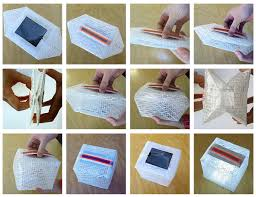Source: ecowatch,com
Published: January 9, 2015
By Anastasia Pantsios
In poor communities and developing nations, life can be dictated by the sun. When a village has no access to an electrical power grid or generator, or when power has been destroyed by a natural disaster such as an earthquake or hurricane, much work can only take place when there is daylight. It’s estimated that a quarter of the world’s population—1.6 billion people—live without electricity, limiting the hours they have for activities like cleaning, sewing, socializing or studying.
The Solar Puff is a versatile, safe and pollution-free light source that doesn’t require access to a power grid. Photo credit: FAARM
A New York-based design collective called FAARM was founded to offer innovative, climate-friendly, sustainable design solutions for economically and disaster-challenged communities. While the group has worked on many projects such as designs for relief centers, a medical clinic and a school in Haiti to address the impact of the 2010 earthquake, it recently sent its first product into the marketplace. That product, the Solar Puff, is portable, affordable solution to lack of access to light. And its origami-inspired design looks as sleek and cutting edge as something you’d find in a museum gift store.
“While governments are working to increase access to electricity, the global population is growing faster than the rate of electrification,” says FAARM. “It is expensive, and sometimes technically infeasible to provide electrification to many areas. Even when electricity does reach a village or town, potential customers may be asked to pay steep fees in order to establish service. For many households, this makes grid connection an impossible dream.”
The Solar Puff, described as “the first low-cost inflatable and foldable solar lamp in the world,” was created by FAARM co-founder Alice Min Soo Chun, an assistant professor at Parsons The New School of Design. It provides 8 to 12 hours of lights from a ring of LEDs after its lithium-ion battery is recharge with a small solar panel in 4 to 5 hour of direct sunlight. It offers all kinds of advantages over existing solutions such as flashlights and kerosene lamps.
For one thing it’s cheaper to use, not requiring the purchase of batteries or kerosene, which can be prohibitive for those with limited income. Unlike flashlights, it leaves the user’s hands free. It provides more directed light for tasks than a kerosene lamp and is more energy efficient than either kerosene lamps or flashlights. It’s durable, lightweight (just 2.6 ounces), waterproof and folds flat to fit in a pocket, making it ideal for use in disaster situations—or camping. It even floats.
And it’s safer and more environmentally friendly than flashlights, kerosene or candles. it doesn’t produce spent batteries to end up in landfills nor does it cause indoor air pollution like kerosene, which can lead to eye and respiratory problems. There’s no danger of fire.
The Solar Puff retails for $30. But Solight Design, the company formed by FAARM to market it, is working on programs to provide them to affordably or at no cost to communities in need. And FAARM sees the Solar Puff as an opportunity for economic development as well. They’re partnering with local manufacturing and distribution businesses in areas that need access to such a product to create vocational training and jobs.
“In one country, or area of that country, we may work with organizations (NGOs) that will provide the SolarPuff free of charge,” says Solight. “In another country, we may subsidize the cost of SolarPuff and allow the local economy to sell them at an affordable price, which in turn will allow them to make a living and add to the overall local economy at large. The end result is still the same, to provide clean, sustainable lighting to those in need.”

